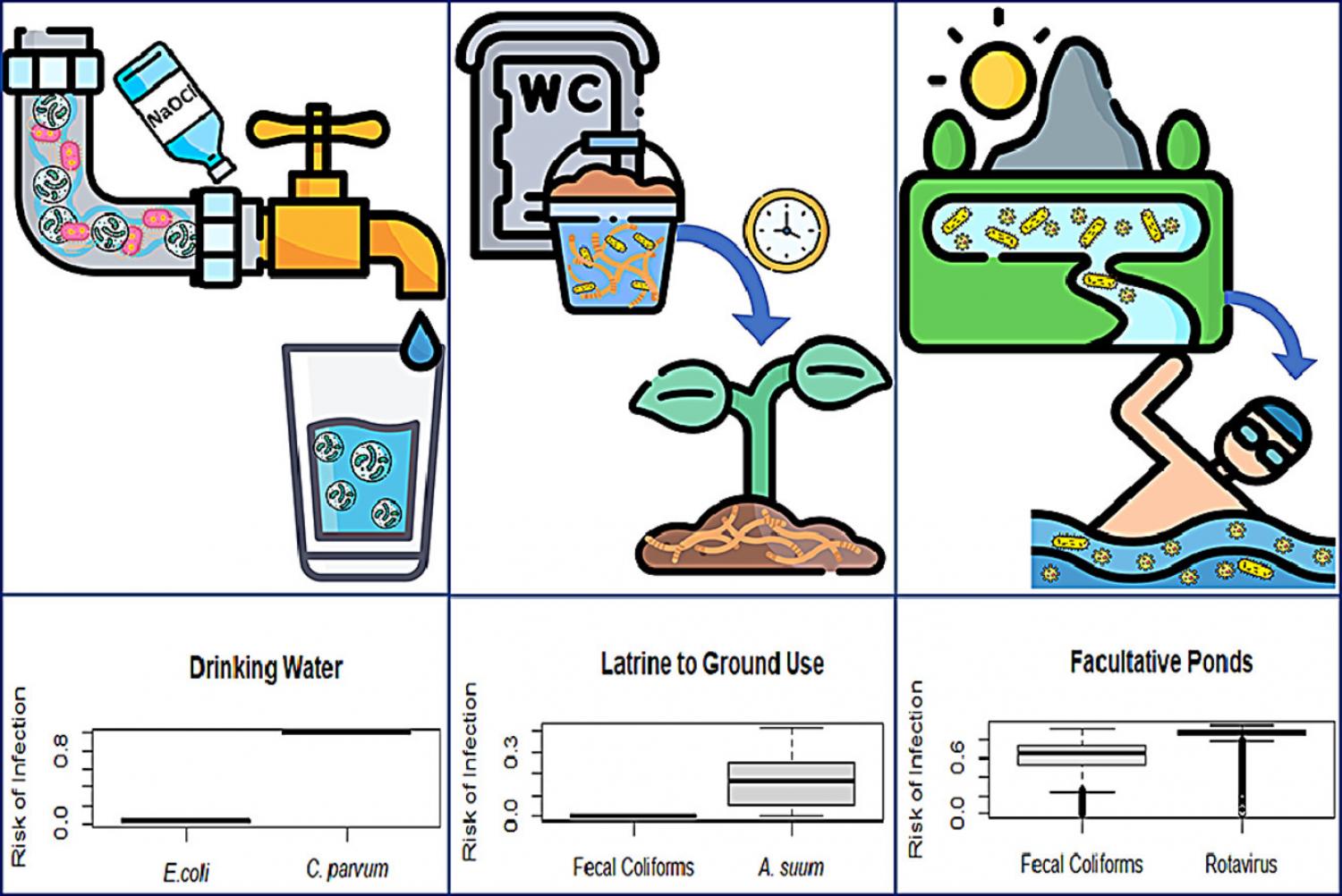
Elsevier, Water Research, Volume 189, 1 February 2021
Water and wastewater utilities, water and sanitation hygiene (WASH) practitioners, and regulating bodies, particularly in developing nations, rely heavily on indicator microorganisms, as opposed to pathogens, for much of their regulatory decisions. This commentary illustrates the importance of considering pathogens and not relying only on indicator organisms when making decisions regarding water and sanitation, especially with respect to meeting the current targets of the Sustainable Development Goal (SDG) 6. We use quantitative microbial risk assessment (QMRA) to present three common scenarios that WASH and public health practitioners encounter to illustrate our point. These include 1) chlorination of surface water for drinking, 2) land application of latrine waste as a fertilizer, and 3) recreation/domestic use of surface waters impacted by wastewater discharge. We show that the calculated probabilities of risk of infection are statistically significantly higher when using treatment/survival information for pathogens versus using indicator species data. Thus, demonstrating that relying solely on indicators for sanitation decision making is inadequate if we truly want to achieve the SDG6 targets of safely managed water and sanitation services.
